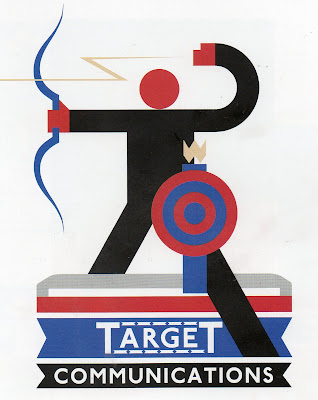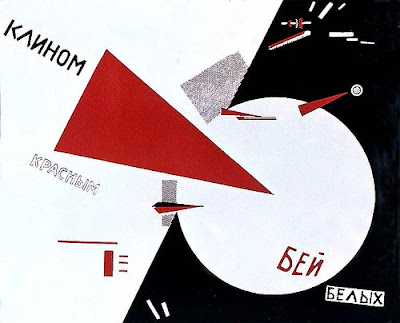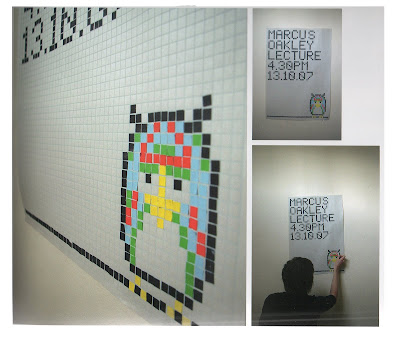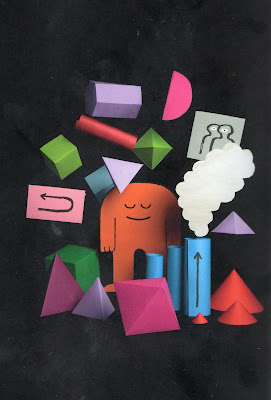
What will I be reflecting upon....
Compare and contrast the processes and practices of your two chosen practitioners, to what extent are they defined by the external rigours of the market place/industry they operate in? During my time at Stockport I have had the opportunity of meeting a variety of practitioners, but being an illustrator, I find the illustrators most relevant to me are the artist I corresponded by email. I have chosen to compare Patrick Hruby and Ben Newman, being attracted to them because their style of illustration is similar to my own. I will be analysing and evaluating their working methods and practices to enable me to contrast and compare them. Also Tal Rosner as he has a long experience of work.
Firstly, Patrick was experimental in his early years as too was Ben, I think to have skills in geometrical design you have to be open to experimentation. I asked Patrick whether he found it hard to simplify his works, he responded by saying that,
"There is a bit of difficulty in any reductive style. I feel like there is an additional difficulty in what I do because there is a decorative aspect of my work that is in opposition to the idea of simplicity. It's maintaining the balance between the two so that they compliment each other that's the most difficult."
I interpreted this to mean that maintaining his simplistic theme is a complex balancing act between the simplistic and decorative aspects such as the plants and grass are added in their simplest forms, he makes decisions constantly about the levels of detail to be included in his images. This informs me that there is no one set way to illustrate, so I feel that it is imperative to be able to constantly adapt and change. Also, from this I can deduce that a balance I would not ordinarily have considered is endorsed.
Newman on the other hand has a different approach; his designs reflect the shape as opposed to the decorative content in his representations.
Hruby and Newman both acknowledge the importance of Art Director Agencies when it comes to generating work.
They have both capitalised and dominated the market very quickly since leaving their education, though the media and agents, i.e. they both have their own websites and are represented by ‘Illustration Mundo’ which is one of the biggest web sources to find illustrators, also both use agents to find work. Both illustrators use a geometric style and this comes in handy because it can be adopted for many illustration jobs such as media graphic design logos, magazine double page spreads, mini-story booklets, newspapers and so on. Ben Newman created a comic book called ‘Ouroboros’ which is currently being sold in art book shops which is selling well according to the store owner.
Due to the credit crunch it has become more and more difficult to find work straight from graduating, with the additional problem of more people now being educated to the same standard – i.e. competition is tough but I also regard it as healthy.
Some artists divide there time between working part time jobs for a guaranteed income whilst slowly building up his clientele which is far more likely to produce sporadic secondary income and I feel that this is typical of new graduates when starting off their career.
Patrick Hruby however, is more concerned about self-promotion and is in the fortunate position whereby he does not need to supplement his income with a regular part-time day job in addition.
For me, personally, I am not unduly concerned about finances at the moment. I have not got ‘fixed ideas’ as to whether or not to go it alone or work as part of a team. I am comfortable doing either essentially.
Tal Rosner was a famous guest lecturer at Stockport College and was truly a great inspiration. He is more experience than Hruby and Newman because his skills have increased over time and he has developed a maturity to his works. Although Newman and Hurby are relatively new they both are promoting themselves though merchandizing products and websites they don’t yet possess experience, which is what clients want to see. Building up over time, a verity of delightful products like Tal Rosner who has created many works developing his independent language has created trust for the buyer.
Is illustration work as readily available now as it was? Yes maybe more so but there is so much more competition in the second email I sent Hruby he said he struggled because of competition to get his foot on the ground but found work because his work is contemporary and state of the art.
I think it is hard to find work but as an illustrator you shouldn’t panic because you can’t find it especially when you’re just starting out. Overtime you build on the confidence you have gained and generally trust with clients.






